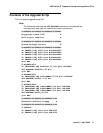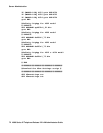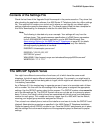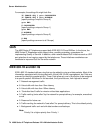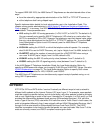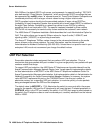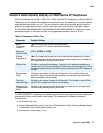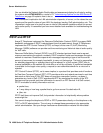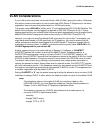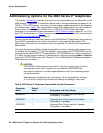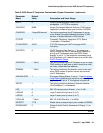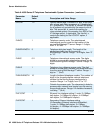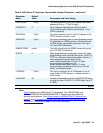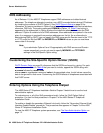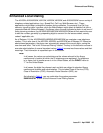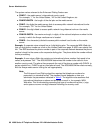
VLAN Considerations
Issue 2.2 April 2005 79
VLAN Considerations
If your LAN environment does not include Virtual LANs (VLANs), ignore this section. Otherwise,
this section contains information on how to administer 4600 Series IP Telephones to minimize
registration time and maximize performance in a VLAN environment.
The system value L2QVLAN is initially set to “0” and identifies the 802.1Q VLAN IDentifier. This
default value indicates “priority tagging” as defined in IEEE 802.IQ Section 9.3.2.3. Priority
tagging specifies that your network closet’s Ethernet switch automatically insert the switch port’s
default VLAN without changing the frame’s user priority (cf. IEEE 802.1D and 802.1Q).
However, you might not want the default VLAN to be used for voice traffic. For example, you
might have administered a VLAN specifically for IP telephony. You need to ensure that the
switch configuration allows frames tagged by the 4600 Series IP Telephone through without
overwriting or removing them. In addition, you want to set the system value L2QVLAN to the
VLAN ID appropriate for your voice LAN.
Another system value you can administer as of Release 1.8 software, is VLANTEST.
VLANTEST defines the number of seconds the 4600 IP Series Telephone waits for a
DHCPOFFER message when using a non-zero VLAN ID. The VLANTEST default is “60”
seconds. Using VLANTEST ensures that the telephone returns to the default VLAN if an invalid
VLAN ID is administered or if the phone moves to a port where the L2QVLAN value is invalid.
The default value is fairly long, allowing for the scenario that a major power interruption is
causing the phones to restart. Always allow time for network routers, the DHCP/TFTP servers,
etc. to be returned to service. If the telephone restarts for any reason and the VLANTEST time
limit expires, the telephone assumes the administered VLAN ID is invalid. The telephone then
re-initiates registration with the default VLAN ID.
Setting VLANTEST to “0” has the special meaning of telling the phone to use a non-zero VLAN
indefinitely to attempt DHCP. In other words, the telephone does not return to the default VLAN.
Note:
Note: If the telephone returns to the default VLAN but must be put back on the
L2QVLAN VLAN ID, you must Reset the telephone. See the Reset procedure in
Chapter 3 of the 4600 Series IP Telephone Installation Guide.
The telephone ignores any VLAN ID administered on the media server if a
non-zero VLAN ID is administered either:
- manually,
- through DHCP, and/or
- through TFTP or HTTP.



